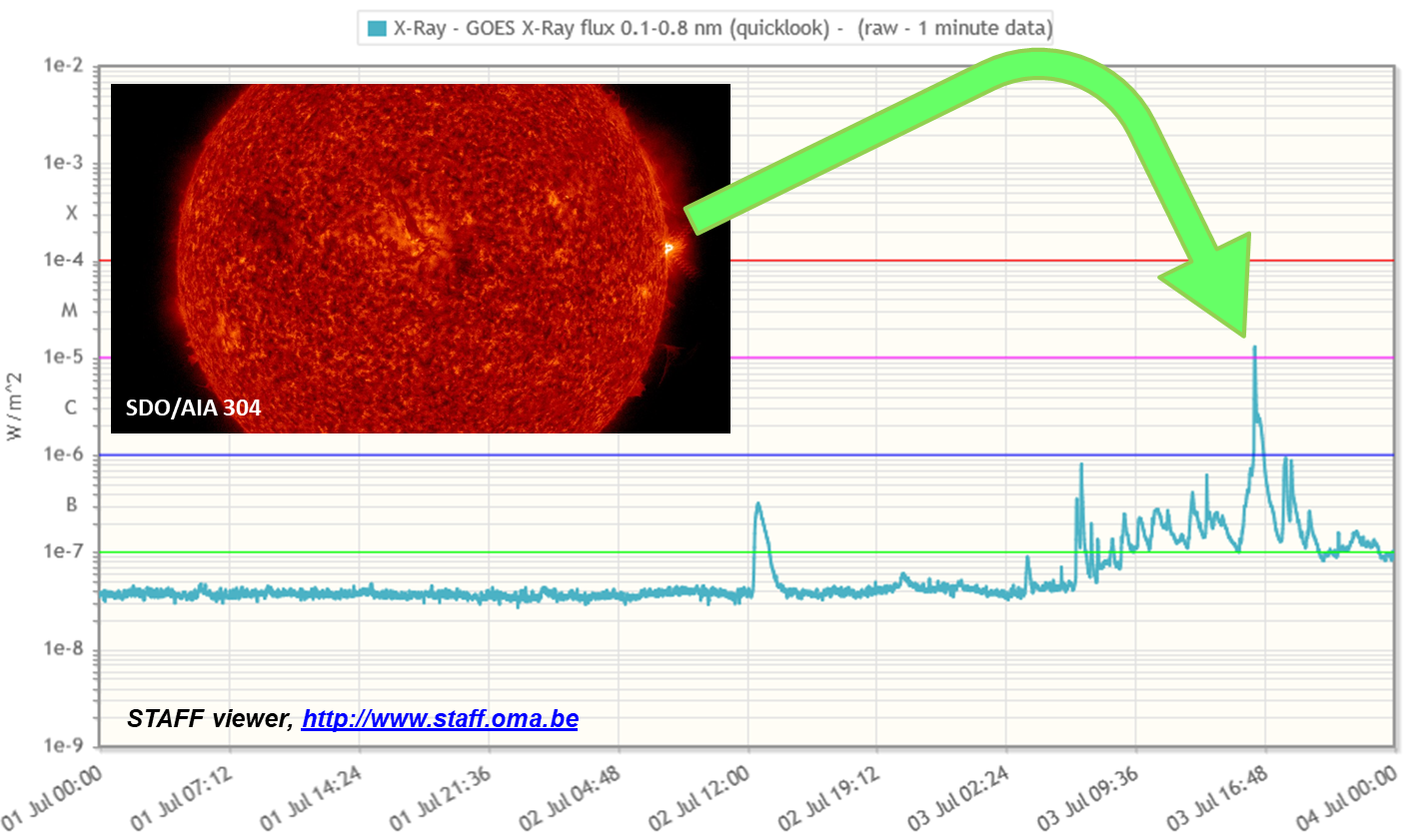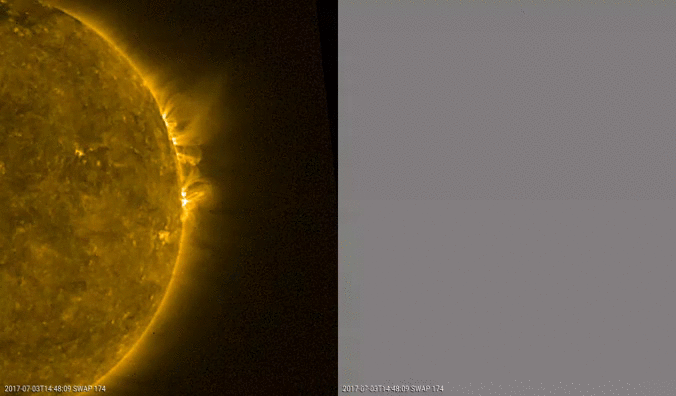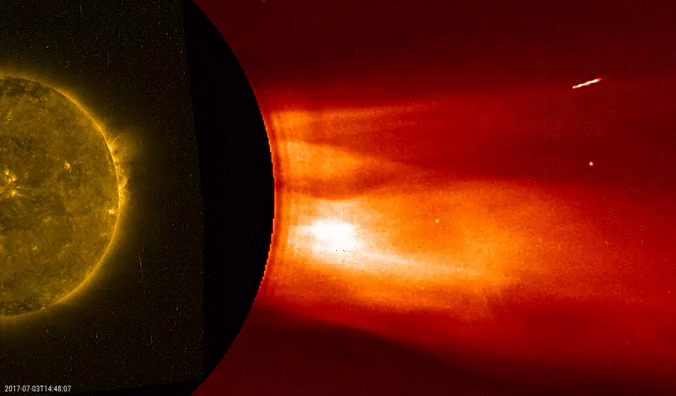Solar observers were readying themselves for a spotless Sun when early on 3 July a small but very active sunspot group developed almost right on the Sun's west limb. Only a few sunspots could be distinguished before the region rotated out of view. Hence, it did not get a NOAA number. The region was not NOAA 2664, which also rotated off the west limb but about 15 degrees higher in latitude. The new region was the source of an M1.3 flare that peaked at 16:15UT. Underneath a combination of an x-ray flux chart (STAFF) with an extreme ultraviolet (EUV) image by SDO/AIA at the time of this medium flare.


As usual, also PROBA2 was on solar watch duty, and its EUV instruments did not miss the eruption. Its wide-angle EUV camera SWAP clearly showed the dynamics in the area and material being ejected into space. The above images show SWAP EUV imagery on the left and SWAP difference imagery (one image subtracted from the previous one) on the right, highlighting the eruption. The associated particle cloud became visible as a slow moving (CACTus) coronal mass ejection (CME) in SOHO coronagraphic imagery about an hour later. The combined PROBA2/SWAP - SOHO/LASCO C2 imagery shows the eruption and associated CME travelling to the west and away from Earth.






